Minoxidil 10 Percent: Is This The Best Dosage?
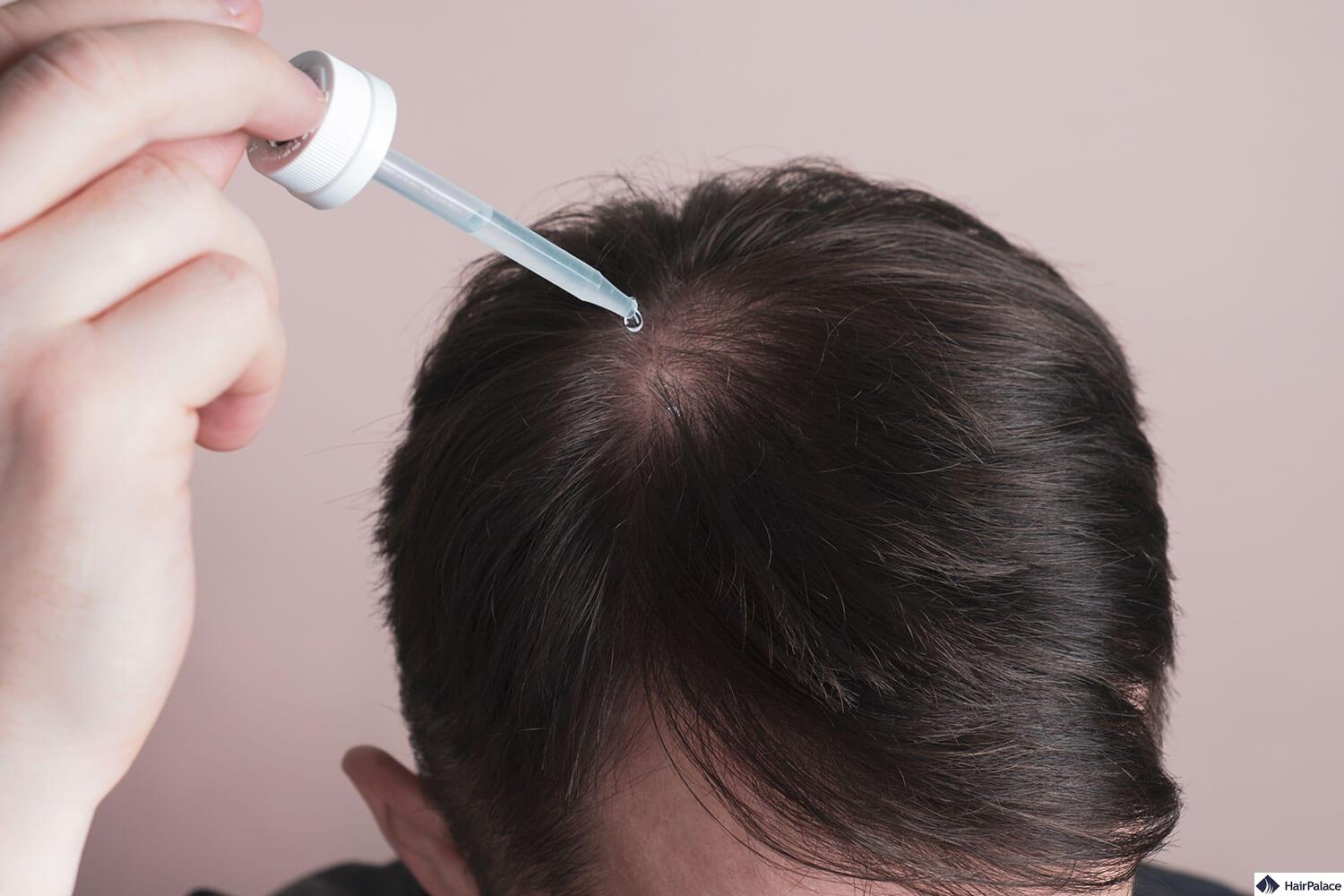
When it comes to tackling hair loss, many individuals turn to minoxidil.
Known for its effectiveness in stimulating hair growth, minoxidil is available in various concentrations, with minoxidil 10 percent emerging as an intriguing option for those seeking stronger results.
But is this high concentration the best choice?
In this article, we’ll delve into what makes it different from other dosages, explore its potential benefits and side effects, and help you determine if it’s the ideal solution for you.
What is minoxidil?
Minoxidil is a topical treatment commonly used to combat hair loss.
Originally developed as a medication for high blood pressure, it was discovered to stimulate hair growth as a side effect.
Minoxidil is now widely prescribed for conditions like male and female pattern hair loss and thinning hair, helping to slow down hair loss and promote regrowth.
Available in various strengths, it is applied directly to the scalp. It works by increasing blood flow to hair follicles, prolonging the hair growth phase.
However, results can take several months to become noticeable, and consistent use is key to maintaining hair growth.
Minoxidil 2%
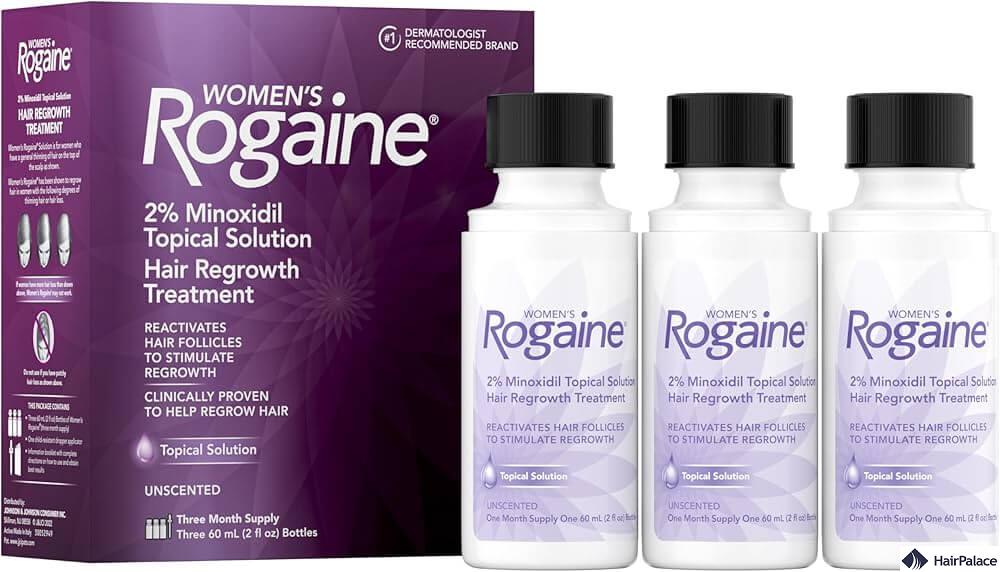
Minoxidil 2% is a lower concentration of the topical solution used to treat hair loss.
It is commonly recommended for women experiencing thinning hair or mild hair loss, though men can also use it.
It should be used twice a day to achieve ideal hair regrowth, with visible results appearing after 8 weeks.
Minoxidil 2% side effects
Minoxidil 2% can cause some side effects, though they are generally mild and affect only a small percentage of users. Common side effects include:
- Scalp irritation: Itching, redness, or dryness at the application site.
- Flaking or dandruff: Due to dryness of the scalp.
- Unwanted facial hair: In some cases, Minoxidil may promote hair growth in areas like the forehead or cheeks if it drips onto the face.
- Initial hair shedding: Temporary increase in hair loss when first using Minoxidil as older hairs fall out to make way for new growth.
Less common, but more serious side effects, such as chest pain, dizziness, or swelling of the hands and feet, should be reported to a healthcare professional immediately.
These are rare and typically associated with systemic absorption, especially in sensitive individuals.
Minoxidil 5%
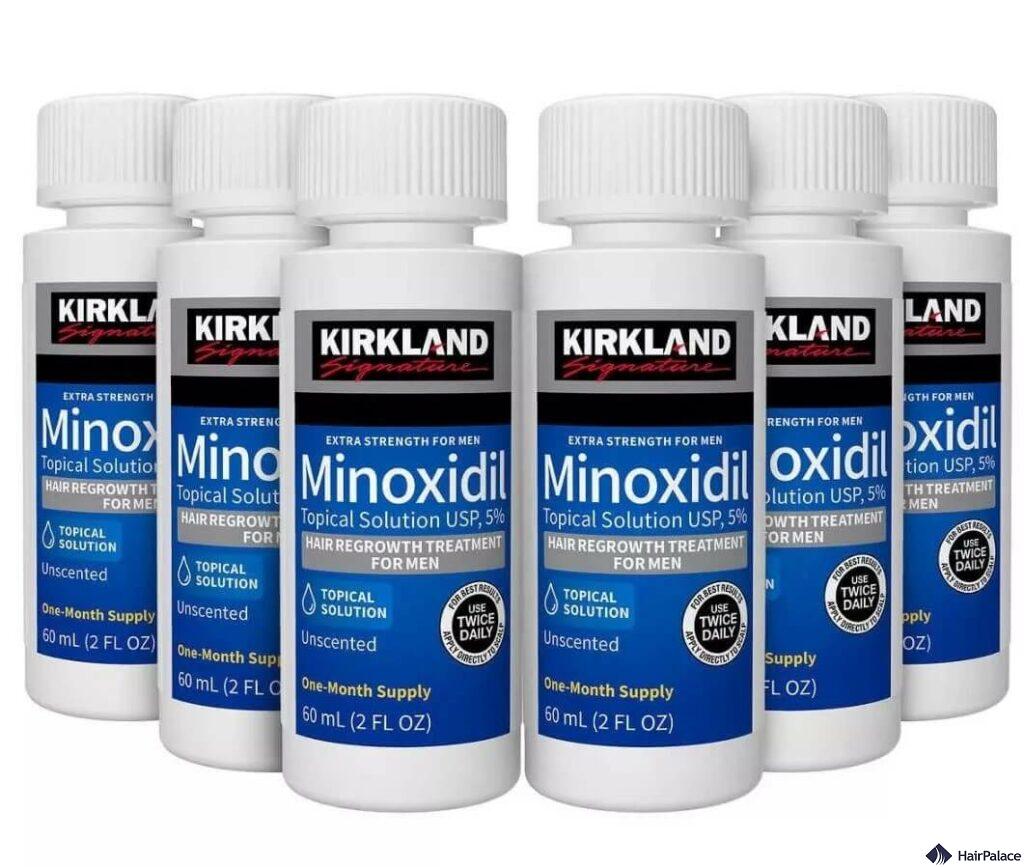
Minoxidil 5% is a stronger concentration of the hair loss treatment, commonly used by men for increasing hair regrowth.
It is more potent than the 2% solution and is often recommended when faster or more noticeable hair regrowth is desired.
Like the 2% version, Minoxidil 5% works by increasing blood flow to hair follicles, prolonging the growth phase, and stimulating thicker hair growth.
This concentration is typically applied twice daily to treat androgenic alopecia, and users may start seeing more hair growth after 3-6 months of regular use.
While effective, it may also cause more side effects, such as scalp irritation or increased hair shedding at the beginning of treatment.
Minoxidil 5% is generally not recommended for women, as it can increase the likelihood of unwanted hair growth in other areas.
Minoxidil 5% side effects
It tends to have side effects similar to those of the 2% version, but they may be more pronounced due to the higher concentration.
Overall, the 5% solution is more effective for hair regrowth, especially in those with male androgenetic alopecia.
It also tends to cause more side effects or exacerbate those seen with the 2% version.
Minoxidil 10%
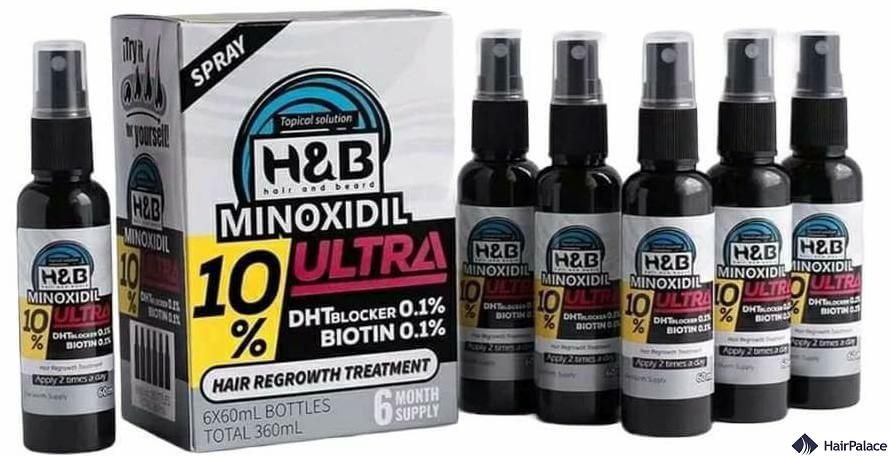
Minoxidil 10% is a significantly superior concentration of the topical hair loss treatment, though it is not as commonly recommended or FDA-approved for general use.
This concentration typically suits individuals who haven’t responded well to lower doses of Minoxidil and seek more aggressive hair regrowth.
Minoxidil 10% may produce faster or more noticeable hair growth for some users, particularly those with more advanced hair loss.
However, the higher concentration doesn’t guarantee better results and is often used off-label.
Minoxidil 10% side effects
Similar to the 5% solution, the main difference lies in the increased risk of side effects rather than their nature.
- Increased Scalp Irritation: Users of the 10% solution may experience more severe irritation, including itching, redness, and dryness.
- Higher Risk of Unwanted Hair Growth: There is a greater chance of hair growing on unwanted areas like the forehead or face.
- More Pronounced Initial Shedding: Similar to the 5% solution, but potentially more noticeable due to the higher strength.
- Systemic Side Effects: The risk of systemic absorption (e.g., dizziness, chest pain, swelling) may be higher with the 10% solution, though these side effects remain rare.
Due to potential side effects and limited approval, use Minoxidil 10% cautiously under a healthcare provider’s guidance.
How do these formulations compare to one another?
The FDA approved minoxidil 2% and 5% as hair loss treatments for androgenetic alopecia.
The 10% solution has not received FDA approval and lacks scientific proof or clinical trials to prove its effectiveness.
Minoxidil 2% vs 5%
2% minoxidil is recommended for women or individuals with moderate to mild hair loss. It provides steady but slower regrowth and is ideal for early-stage thinning or mild hair loss cases.
The 5% version produces faster and more significant hair regrowth, especially in cases of moderate to severe hair loss like male pattern baldness or receding hairlines.
Clinical studies have shown that men using 5% see better results compared to 2%.
Overall minoxidil 5% is more potent and effective, especially for men, but with a higher chance of side effects.
While minoxidil 2% is a gentler option, often recommended for women or those with less aggressive hair loss.
Minoxidil 5% vs 10%
May provide enhanced results for those who do not respond well to the 5% solution.
It is not FDA-approved and lacks as much clinical backing, but some users report better regrowth with the stronger concentration, especially in more advanced cases of hair loss.
However, studies found that in the vast majority of cases, the 5% solution leads to better results with fewer side effects than minoxidil 10%.
Also applied twice daily, but generally recommended only for individuals who haven’t seen desired results with the 5% solution.
It is used off-label and should be applied under medical supervision due to the stronger concentration.
Overall the 10% version is best suited for those who have not seen results with lower concentrations and are willing to risk stronger reactions.
Minoxidil 10% alternatives
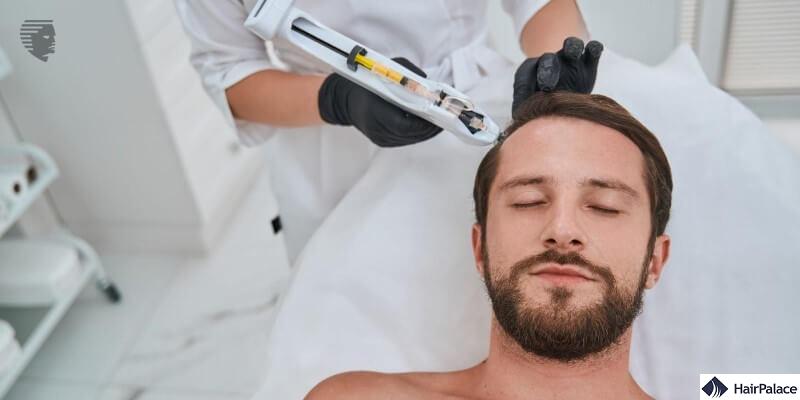
If you’re considering Minoxidil 10 percent alternatives for hair loss, several other treatments can be effective, depending on your needs. Here are some common alternatives:
1. Finasteride (Propecia)
Finasteride reduces DHT (dihydrotestosterone) levels, a hormone linked to male pattern baldness.
Proven to slow hair loss and promote regrowth, particularly at the crown. Works well in combination with Minoxidil.
2. Low-Level Laser Therapy (LLLT)
Devices like laser caps or combs emit low-level lasers that stimulate hair follicles and promote regrowth.
Backed by some studies showing it can help hair regrowth, particularly when combined with Minoxidil or Finasteride.
3. Hair Transplant Surgery
Follicles are transplanted from areas of dense hair (like the back of the head) to bald or thinning areas.
A hair transplant provides a permanent solution for male pattern hair loss, and creates natural-looking results for areas with significant baldness.
4. PRP (Platelet-Rich Plasma) Therapy
Involves injecting platelet-rich plasma from your own blood into the scalp to stimulate hair growth.
Some studies suggest PRP can help with hair regrowth, especially when combined with other treatments.
5. Dutasteride
Similar to Finasteride, it blocks DHT but is more potent. It’s often prescribed when Finasteride isn’t effective.
May offer more significant hair regrowth than Finasteride.
6. Natural Remedies and Supplements
A herbal supplement that may block DHT.
Some claim improvements in hair health, though the evidence is limited.
7. Ketoconazole Shampoo
An anti-fungal shampoo that may reduce scalp inflammation and DHT.
Some studies suggest it can slow hair loss when used regularly, particularly alongside Minoxidil or Finasteride.
Each alternative has its benefits and risks, so it’s important to choose the one that aligns with your hair loss condition, lifestyle, and tolerance for side effects.
Which minoxidil strength is right for me?
When choosing between hair loss treatments, it’s important to consider the extent of hair loss and individual tolerance.
For women, the 2% concentration is typically recommended, especially for mild to moderate hair thinning, while 5% is more common for men or women with more advanced hair loss.
The 5% solution tends to offer better results but can cause more side effects, such as skin irritation or unwanted hair growth in sensitive areas.
For individuals with severe hair loss or those who haven’t seen sufficient results from 5% minoxidil, a 10% solution is available in some markets.
However, 10% minoxidil is not FDA-approved and should be used with caution, as it can increase the likelihood of side effects.
This higher concentration is generally reserved for those who have already tried lower strengths with limited success and should be used under medical supervision.
Ultimately, starting with a lower concentration and moving up based on how your hair growth cycle reacts is the sensible approach.
- Lolli F, Pallotti F, Rossi A, Fortuna MC, Caro G, Lenzi A, Sansone A, Lombardo F. Androgenetic alopecia: a review. Endocrine. 2017 Jul;57(1):9-17.https://pubmed.ncbi.nlm.nih.gov/28349362
- Hu R, Xu F, Sheng Y, Qi S, Han Y, Miao Y, Rui W, Yang Q. Combined treatment with oral finasteride and topical minoxidil in male androgenetic alopecia: a randomized and comparative study in Chinese patients. Dermatol Ther. 2015 Sep-Oct;28(5):303-8.https://pubmed.ncbi.nlm.nih.gov/26031764
- Vexiau P, Chaspoux C, Boudou P, Fiet J, Jouanique C, Hardy N, Reygagne P. Effects of minoxidil 2% vs. cyproterone acetate treatment on female androgenetic alopecia: a controlled, 12-month randomized trial. Br J Dermatol. 2002 Jun;146(6):992-9.https://pubmed.ncbi.nlm.nih.gov/12072067
- A randomized, placebo-controlled trial of 5% and 2% topical minoxidil solutions in the treatment of female pattern hair losshttp://dx.doi.org/10.1016/j.jaad.2003.06.014
- Preeti Patel; Trevor A. Nessel; Dinesh Kumar D. Minoxidil https://www.ncbi.nlm.nih.gov/books/NBK482378/


